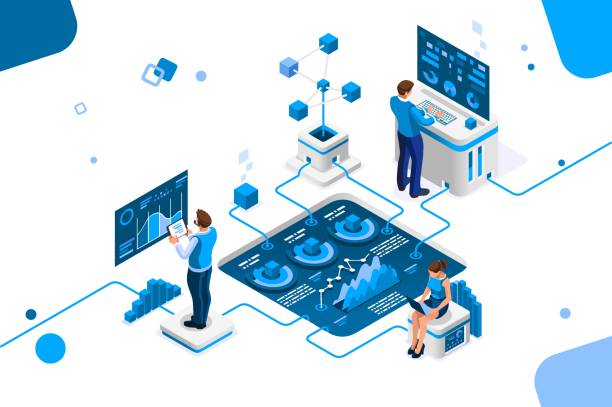Software applications are undergoing continuous improvements, and the fact that innovation is at an all-time high further adds to these improvements. The usual software methods will most probably become ancient in the next 5-10 years time span if innovation keeps up the same pace.
Tech companies have to accommodate the rapidly developing and changing trends in order to stay relevant and at the top of the game. For example, there is a raising need for no-code software and websites with an estimated market value of $46.4 Billion by 2026.
The novel COVID19 pandemic has caused most of the fields, if not all, to adapt to unique working practices; the same is the case with software organizations. They have adopted a revised method of working aligned with the changing trends in the market and produced compelling digital strategies.
Some of the digital trends that tech companies must look out for as they develop new applications are listed below in detail.
Operate From Anywhere in the World
The latest applications affect how the establishments work in a community switching to a digitized world. When flexible working models are embraced by companies, it enables them to spread their facilities to remote locations. It is not just about making services accessible remotely but about providing a top-tier customer experience with enhanced digital solutions.
The biggest example that we can learn something about remote work from is: Gaper.io. Their completely remote model allows employees to work from anywhere at any time. Providing flexible hours. Resulting in happy employees, further resulting in higher levels of productivity. If more companies started working like Gaper.io, the world will become a happier place.
Magic of Artificial intelligence
Software development companies want to benefit from AI to enhance their services and customer experience, and rightly so, as AI has huge potential. It gives us enhanced results, decision-making skills and offers an essential space for technological advancements. From small to large tech companies ranging from Apple to Microsoft to Mega Giant Google, all companies make use of this trend extensively. The addition of AI to the digital world will prove to be a game-changer in the second quarter of 2022.
Cyber Security’s Demands
The world is becoming online at an exponential rate. As we move towards a more interconnected world, cybersecurity threats can no longer be ignored by tech companies if they want to function effectively and not lose money. Cybercriminal activities are expected to cost startups and companies a humongous $6 trillion by 2021.
Traditional cyber protection solutions such as the installation of anti-malware and perimetric firewalls have become redundant and ineffective against the more ingenious techniques used by cybercriminals. This requires adopting and utilizing modern cybersecurity solutions.
Alternative repetitive Tasks
Most of the small and large-scale tech companies are switching to RPA techniques for increased effectiveness. Especially, RPA is being incorporated into unimportant and rotary tasks, more effective to machines than human labor. Effective and important use of the RPA technique is the onboarding of employees and contract review.
RPA techniques are also being used to boost manual labor and production size. The humongous and most important advantage of RPA techniques is that it provides space for creative thoughts to flow and focus on other important tasks rather than just carrying out repetitive tasks and procedures.
Personalization through the internet of Behavior
Forthcoming software trends will bend towards personalization, especially with the Internet of Behavior (IoB). Along with accumulating customer data from the web, IoB helps recognize the Behavior of people while interacting with newly made apps and devices.
It should be stated that it may take some time for you to go mainstream; however, according to Gartner, 40% of global customer data will be tracked and stored by 2025. An example is being set by YouTube in this regard, in how it recommends content by monitoring the users’ surfing habits.
Advanced Web Apps
Web apps are setting the bars very high these days by introducing unique specifications and features. These apps smartly incorporate features of website accessibility into native apps. Advanced web apps can be used online and easily acquire access to hardware systems such as GPS and cameras. The customer experience will be similar to native apps minus the trouble of upgrading and installing.
Rise of Development with low-code/no-code
Low-code/no-code development platforms are visual software development environments. These platforms let business and citizen developers drag and drop application components. Also, provide a facility to link with other devices and build mobile or web apps.
With no programming skills necessary, anybody may create applications. This is because of its drag-and-drop or low-code editors. Some expect the start of a new era of no-code coding will be very helpful. As technology will become even more accessible to the common person.
ML and DL-driven approaches will have more power
Machine learning (ML) is a subset of the larger trend of Artificial Intelligence (AI). It enables more accurate forecasting and automated decision-making. This technology is required for software products to function more effectively.
With ML, without being expressly designed, software products may make predictions and perform actions. These techniques will be used by developers to suit the demands of their clients.
Deep learning (DL) is employed in a variety of sectors. It entails autonomous driving and medical equipment. Automotive researchers use DL to recognize items such as stop signs and traffic signals automatically. Furthermore, deep learning helps to diagnose pedestrians, which aids in the reduction of accidents.
Deep learning is paving the way for the next generation of computing systems, namely in the fields of artificial intelligence and machine learning.
